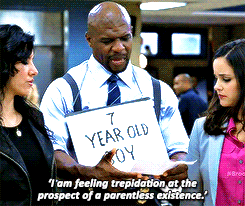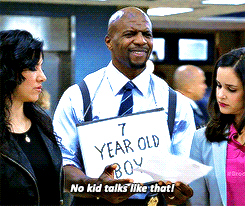Don’t Say That: 6 Ways to Improve Dialogue in Your Book
Mastering dialogue is a necessary part of being a writer, but it comes more naturally to some than others. Whether you’re a natural or you find yourself struggling, these 6 tips will improve your dialogue. I’ve read a few books lately that had terrible dialogue and it was so distracting I put the book down. Dialogue is one of the best ways for readers to connect yo your characters—especially if your narrative style is limited to one person. To ensure you don’t fall prey to the same issue, I’m giving you 6 ways to improve dialogue in your book and make sure readers keep reading.
1: Dialogue Tags
New Writers
Don’t get tripped up with fancy dialogue tags. “He/she said” is perfectly fine and most of the time your readers will skip over it without really noticing. But when you start adding tags like chortled or bellowed it becomes more obvious and it breaks them out of the read. The whole point is to let the dialogue itself do the talking, so for new writers, I recommend sticking to he said/she said until you learn some tricks to hide it even more.
If a unique tag is crucial, and I do mean crucial, to the understanding of the dialogue you can go ahead and use mumbled or screamed, but I promise you those tags are rarely necessary. It’s all about practice and I find it’s best to get into a rhythm of simple tags before you increase the difficulty.
Seasoned Writers
Using simple tags is pretty standard advice, but once you’ve gotten used to tagging dialogue directly, it’s time to learn how to hide your dialogue tags. It’s very similar to an academic paper when you blend quotes. Here’s a super simple example of what not to do:
“How do you expect to get there without a car?” Jane asked before walking to the bookshelf.
“Trust me,” Eric replied, “I have a plan.”
See how unnecessary something like “replied” is? It breaks up the dialogue for no good reason (other than to remind us who is speaking in a very annoying and unnecessary way). Even if you add actions between lines the tags are so obvious that it speaks to your inexperience as a writer and takes the reader out of the story. Instead, use actions to tag your dialogue without direct tags as often as you can. See here:
“How do you expect to get there without a car?” Jane wandered to the bookshelf and traced her finger over the spines, her hips swaying the way they always did when she wanted something. If history was any indication, it was a very effective strategy.
“Trust me.” Eric ran his tongue over his teeth, stealing a glance at the elegant shape of her legs in her signature tight jeans. “I have a plan.”
By disguising your dialogue tags in action you can skip the hassle of direct tags which will improve your flow and keep readers immersed. It’s also a lot easier to add interesting narration when you’re not bogged down with tags in every sentence.
2: Don’t Forget Subtext
Subtext is everything your characters aren’t saying. Too many times new writers give away their character’s every thought in their dialogue, but no one speaks that way in real life. If you want your character to feel real and for their relationships to be complex and interesting, you need a lot of subtext.
Friends don’t always tell each other when they’re offended. Lovers, especially new ones, have trouble confessing their deepest fears and desires. But in any case of human interaction, those thoughts and feelings exist on the edges, painting everything your character says in a unique light. If you give too much away, it will feel stilted.
Think about all the things that go through your head when you talk to someone. The majority of what you think doesn’t come out of your mouth, so don’t let your characters be unrealistically sharing.
How can you add subtext?
Actions are a great way to add subtext. I call it the “never mind,” because having your character start to say something and then change their mind is one of the easiest ways to add subtext. Say your protagonist is off to face his enemy, but he’s been fighting with his brother:
Alex forced his feet to the door, though it was the last thing he wanted to do. His hand hovered over the doorknob and his fingers shook as he tried to grab it.
“Hey, Alex?” Jared stood, his Adam’s apple bobbing when he swallowed. For the first time in nearly a month, he made full eye contact.
Alex felt his chest tighten. “Yeah?” He turned, the invisible ties around him growing stronger. Responsibility be damned. If Jared asked to come along he’d have to let him. Who better to have on a suicide mission?
His brother’s jaw tightened and he shoved his hands in his pockets. “Don’t do anything stupid.”
Alex nodded and rushed through the door without looking back.
When you focus on what your character’s don’t say, you give them a chance to display complex emotions. Alex wants his brother to come with him. Jared wants to go, but neither of them knows how to breach the gap. In a full book where both of these characters have been developed, readers would be begging them to just talk to each other instead of missing what might be their last chance.
Hidden Motives
This is just one example of subtext. You can also show deeper emotions like resentment, fear, etc. that the character’s don’t say they feel outright (and neither does the narration). You can just feel it based on body language, tone, and word choice. Check out this scene from Game of Thrones for a great example of subtext:
For all the things Sansa and Daenerys do say to each other, I could write an essay about what they don’t say. Remember, your audience is smarter than you think they are. They’ll pick up on the gist of your dialogue without you having to spell it out.
3: Never Use Filler Dialogue

Like everything else in your book, dialogue should be written on purpose. Even small talk should demonstrate something deeper about your characters. Filler dialogue is easy to spot and it’s annoying to readers. If you find yourself writing a conversation because you need to take up space, that’s not a good enough reason.
When writing any conversation, you should use it to expose something about the characters. Maybe the bartender is short with people because he just broke up with his girlfriend and he’s in a trash mood (don’t forget to give your characters some backstory!). Or your protagonist’s palms sweat every time they talk to their crush. Use smaller conversations to convey these details in a meaningful way, and make sure it always has something to do with the big picture.
All dialogue should be essential. If yours isn’t, cut it.
4: Write the Dialogue First
Having trouble? It can be extremely useful to write out all the dialogue for a chapter without adding any narration at first. This is a great way to keep your goals in mind and make sure your dialogue is heading somewhere. It’s also great for adding subtext because you can easily see when your characters are saying too much. Look at the dialogue without the narration and you should see places where the words are not explicit but the meaning is there. Plus, it’s a great way to break through writer’s block.
Sometimes you just need to see the bones of a chapter before you can really bring it to life. Set up the scaffolding with dialogue and it will become clear where you should add narration and what kind of narration will make the scene more effective. You might even have a new idea about the setting or context of a discussion after you see the way it plays out. For instance, a conversation that is happening at a crowded mall might be better served in a quiet setting.
5: Read it Out Loud
This is great advice for anything you write, but it’s essential for dialogue. Reading your conversations aloud will help you catch lines that sound out of character, cheesy, or nonsensical. Even though most readers are reading silently, you want your writing to have a steady rhythm in their heads.
Some of you may not like this part, but you really ought to read it out loud to an audience. Or better yet, have them read it out loud for you (I had my brother do this once. It was embarrassing but very helpful). It’s a lot easier to be critical of your work when you are immediately accountable to someone and you can see their reaction right away.
6: Give Your Characters a Voice
Each character should have a unique way of speaking. This is one of the best ways to identify who is speaking without excessive tags. You should still make it clear through narration and style who the speaker is, but if you’re doing your job right your readers will start to get a feel for each character and they’ll be able to guess who is speaking from the dialogue itself.
I once wrote a British character and I was so excited to use words like “love” and other gag-worthy english slang. But I realized halfway through I needed to do a lot more research to determine what kind of accent he would use, different names for the same objects between British and American english, etc. There’s so much more that goes into a pattern of speech than a few lazy slang words here and there.
The same can be said for any character, whether they’re foreign or not. People have unique phrases and cadences that mark their speech, so depending on who your character is as a person, their dialogue will sound different than the protagonist. If it doesn’t, you’ve got a problem.
Keep At It
That’s all for now. The deeper you get into writing, the more you’ll be able to experiment as you create unforgettable characters. But if you implement the six tips I’ve given you here, I promise your writing will improve drastically.
If you want to read more about using simple “said” tags, check out this blog post. Otherwise, go find your happy place and write!
Until next time. Happy writing!




